July 1, 2025

The article titled "9 Unconditioned Response Examples in Behavioral Psychology" serves as a critical resource for understanding instinctive reactions that are not learned through experience. It highlights unconditioned responses, such as:
These physiological reactions are not just fascinating; they are essential for survival. For Board Certified Behavior Analysts (BCBAs), grasping these responses is paramount, as it equips them to develop effective therapeutic interventions. Understanding the intricacies of these instinctive reactions can significantly enhance the efficacy of behavioral strategies employed in clinical settings.
Understanding unconditioned responses is essential in behavioral psychology; these instinctive reactions play a pivotal role in human behavior and emotional regulation. By exploring examples such as:
readers gain insight into how these automatic reactions influence everyday life and therapeutic practices. However, what occurs when these responses become overwhelming or maladaptive? This article delves into the intricacies of unconditioned responses, highlighting their significance and the challenges they present in both clinical settings and personal experiences.
The demand for (BCBAs) is at an all-time high, making it crucial for healthcare employers to connect with the right talent. [Hire ABA](https://hireaba.today) specializes in linking BCBAs with job openings that allow them to leverage their expertise in behavioral psychology. are pivotal in this process. Our team meticulously evaluates your experience and career aspirations to ensure optimal job matches.
Utilizing advanced job fit scoring, we pinpoint opportunities that align with your skills, preferences, and desired locations. This streamlined hiring process empowers BCBAs to concentrate on their practice, ultimately enhancing the quality of care provided to clients in ABA therapy settings. This focus on quality not only benefits the practitioners but also significantly advantages healthcare employers.
Are you facing challenges in finding the right BCBAs for your organization? Hire ABA is here to address those issues and elevate your recruitment strategy. Connect with us today to discover how we can assist you in securing top-tier talent in the field.
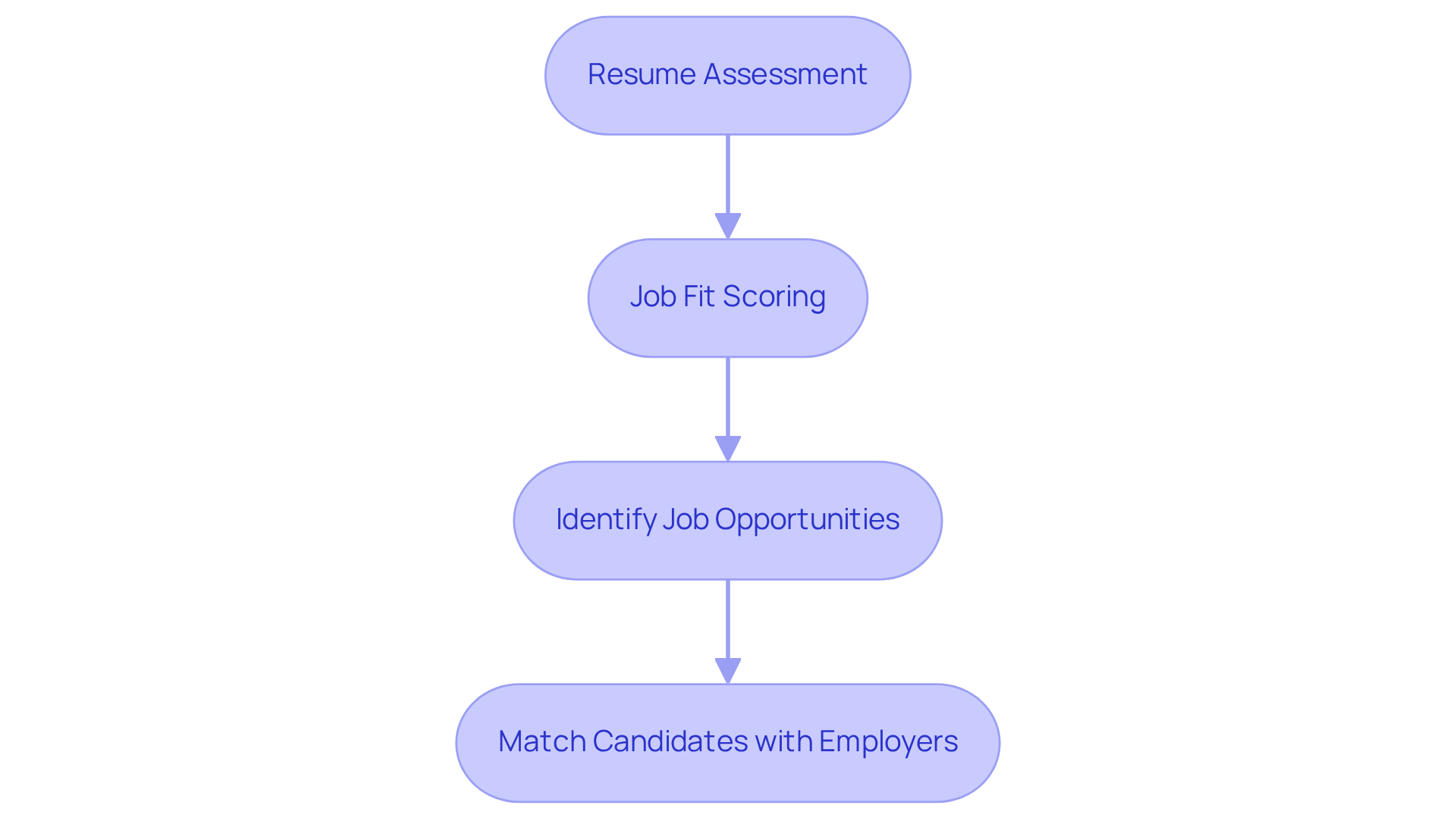
Flight behavior represents an instinctive response that emerges when an individual perceives a threat. This unconditioned response example equips the body to either escape from danger or confront it directly. In the realm of , recognizing this reaction is vital for developing effective strategies to manage anxiety and stress, particularly within therapeutic settings. Here, behavior analysts work collaboratively with individuals facing various challenges, enhancing their understanding and coping mechanisms.
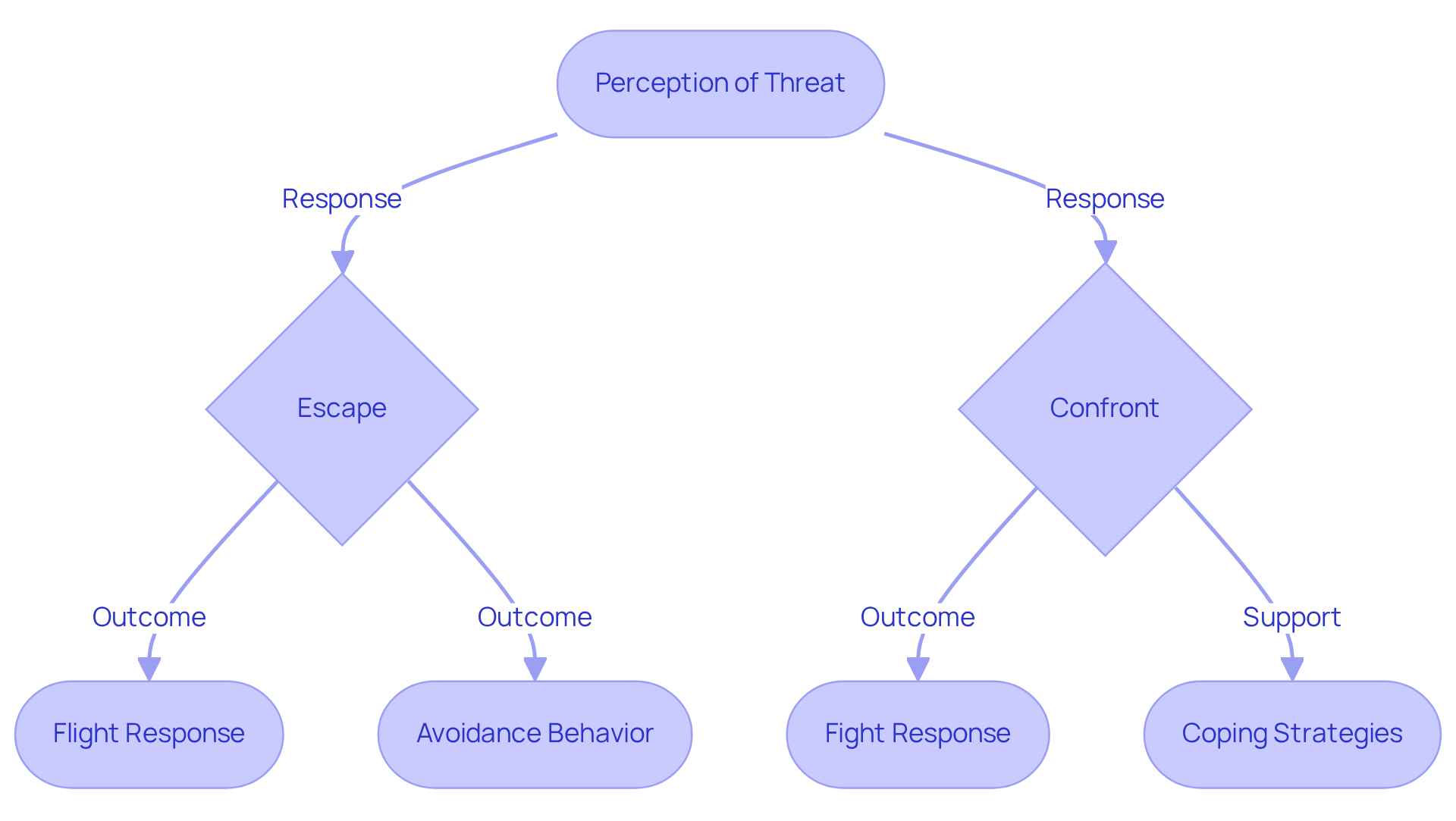
Mouth watering exemplifies an unconditioned reaction triggered by the aroma of food. This physiological response serves as an unconditioned response example, occurring automatically to effectively prepare the digestive system for incoming nourishment. In the realm of [behavioral therapy](http://hireaba.today/blog-posts/10-bcba-masters-programs-to-advance-your-aba-career), understanding such reactions is crucial. It empowers (BCBAs) to devise interventions that address eating behaviors and food-related anxieties in clients, particularly those grappling with eating disorders.
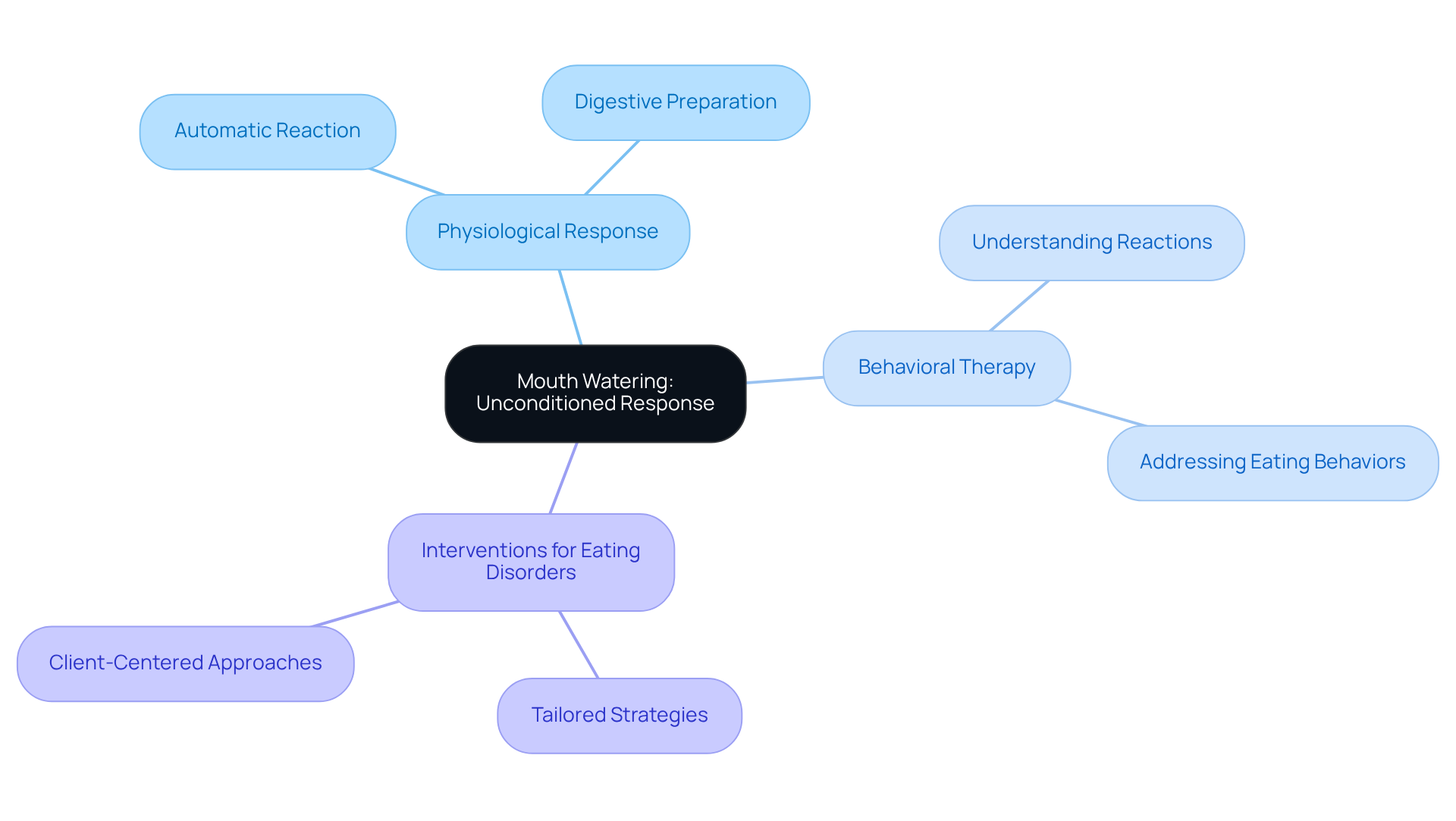
Sneezing, an involuntary reflex triggered by irritants in the nasal passage, plays a crucial role in expelling foreign particles and safeguarding the respiratory system. Understanding this physiological reaction is essential, particularly in therapeutic environments.
How often do you consider the impact of allergens on your clients?
Board Certified Behavior Analysts (BCBAs) are well-positioned to inform clients about these reactions and develop effective coping strategies for managing allergies. This proactive approach not only enhances clients' overall well-being but also reinforces the value of BCBAs in fostering healthier environments.
Engage with [Hire ABA](https://hireaba.today) to explore how we can assist you in who can make a difference.
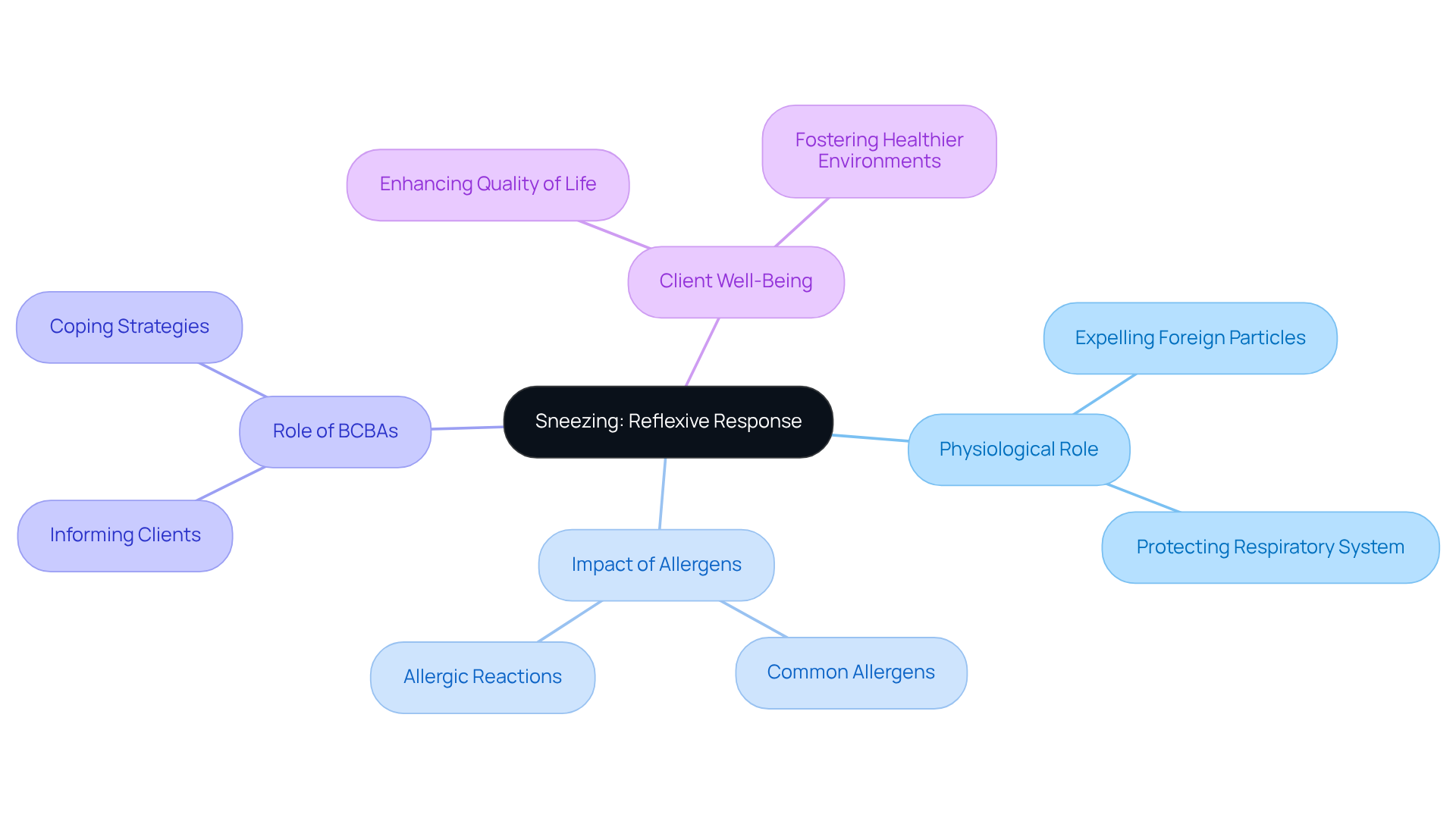
The gag reflex serves as a crucial protective mechanism, preventing choking by inducing a contraction in the throat upon detecting foreign objects. This unconditioned response example is particularly vital for individuals experiencing —a condition that affects over 50% of stroke patients and up to 62% of those in critical care.
In 2022, the FDA approved the use of Phagenyx to restore swallowing control in patients with severe dysphagia following stroke, marking a significant advancement in treatment options. [Board Certified Behavior Analysts (BCBAs)](https://hireaba.today) can play an essential role in assisting individuals facing these challenges. By leveraging their expertise, behavior analysts can implement strategies to address fears associated with eating and swallowing.
Techniques such as graded desensitization and systematic desensitization have proven effective, as demonstrated in case studies where patients successfully underwent dental procedures without gagging after targeted interventions. Peter Grevelding noted, "We have seen great results with the very first patients. It will be a valuable tool in improving the quality of care for our stroke patients who face swallowing problems."
Speech therapists emphasize the importance of creating a supportive environment, highlighting that addressing psychological barriers can significantly enhance clients' experiences during therapy. Furthermore, the Royal College of Physicians updated their guidelines in April 2023, recommending pharyngeal electrical stimulation for patients with severe dysphagia after stroke.
By comprehending the dynamics of the gag response, which serves as an unconditioned response example, BCBAs can create customized interventions that not only ease fears but also foster a healthier relationship with food and swallowing.
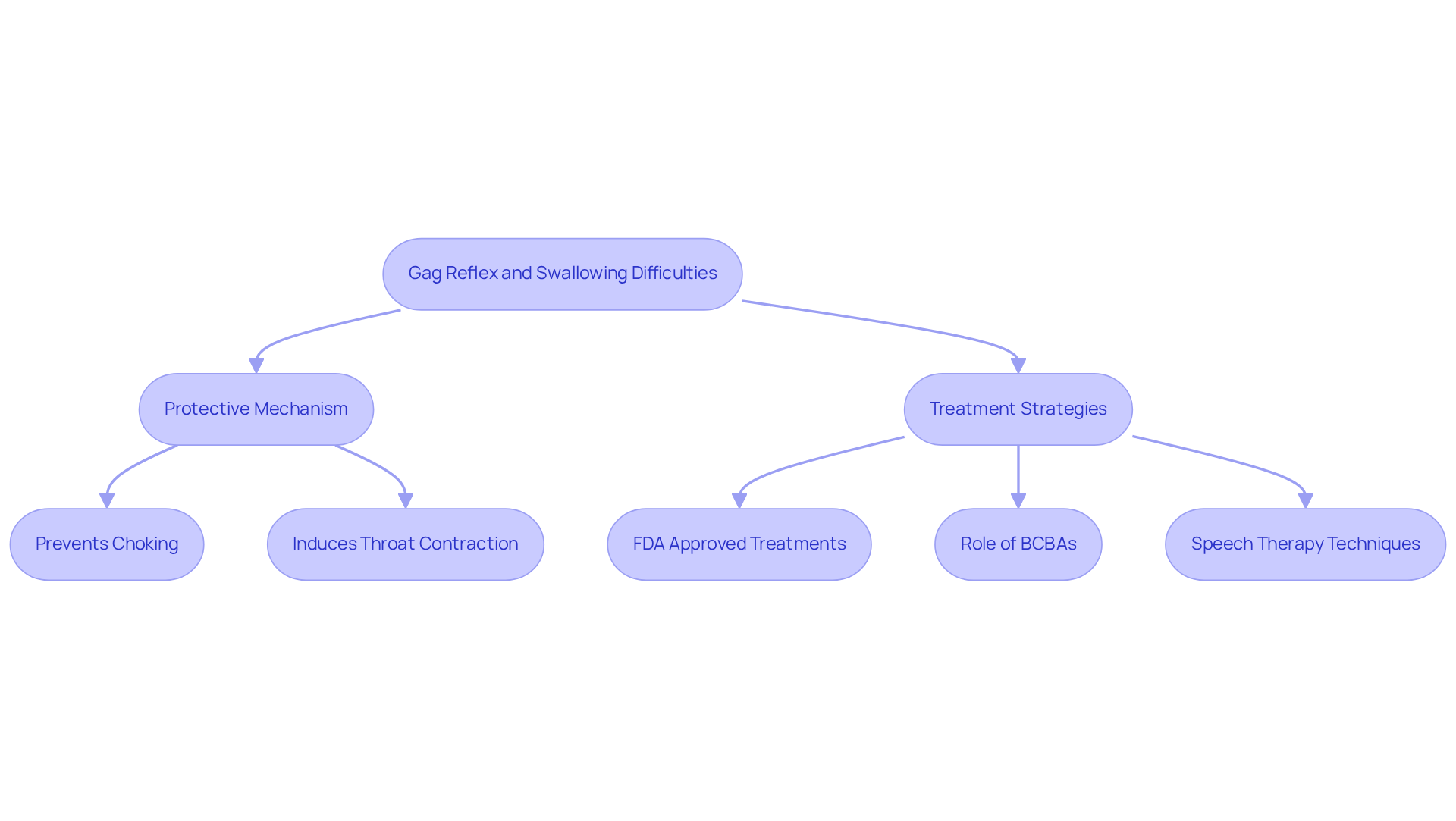
The Moro reaction, commonly known as the startle response, is an involuntary behavior exhibited by infants when they experience a sudden loss of support or are startled by a loud noise. This involuntary action consists of automatic movements or responses that occur in reaction to specific stimuli, serving as an unconditioned response example vital for infant survival. It triggers protective behaviors that enable the child to react to potential threats. Typically, the is observable from birth to 4 months.
Board Certified Behavior Analysts (BCBAs) can leverage their understanding of the Moro response to effectively assess developmental milestones. By closely observing this response, BCBAs can ascertain whether an infant is meeting key developmental benchmarks, which is essential for promoting optimal growth and emotional well-being. Moreover, insights derived from the Moro response can guide interventions aimed at fostering healthy emotional reactions in children, thereby enhancing their resilience and adaptability during formative years.
Pediatric psychologists emphasize the importance of recognizing these responses as indicators of neurological health, highlighting the need for thorough evaluations in early childhood development. To improve assessments, healthcare employers should contemplate incorporating regular evaluations of the Moro reflex into their developmental monitoring practices.
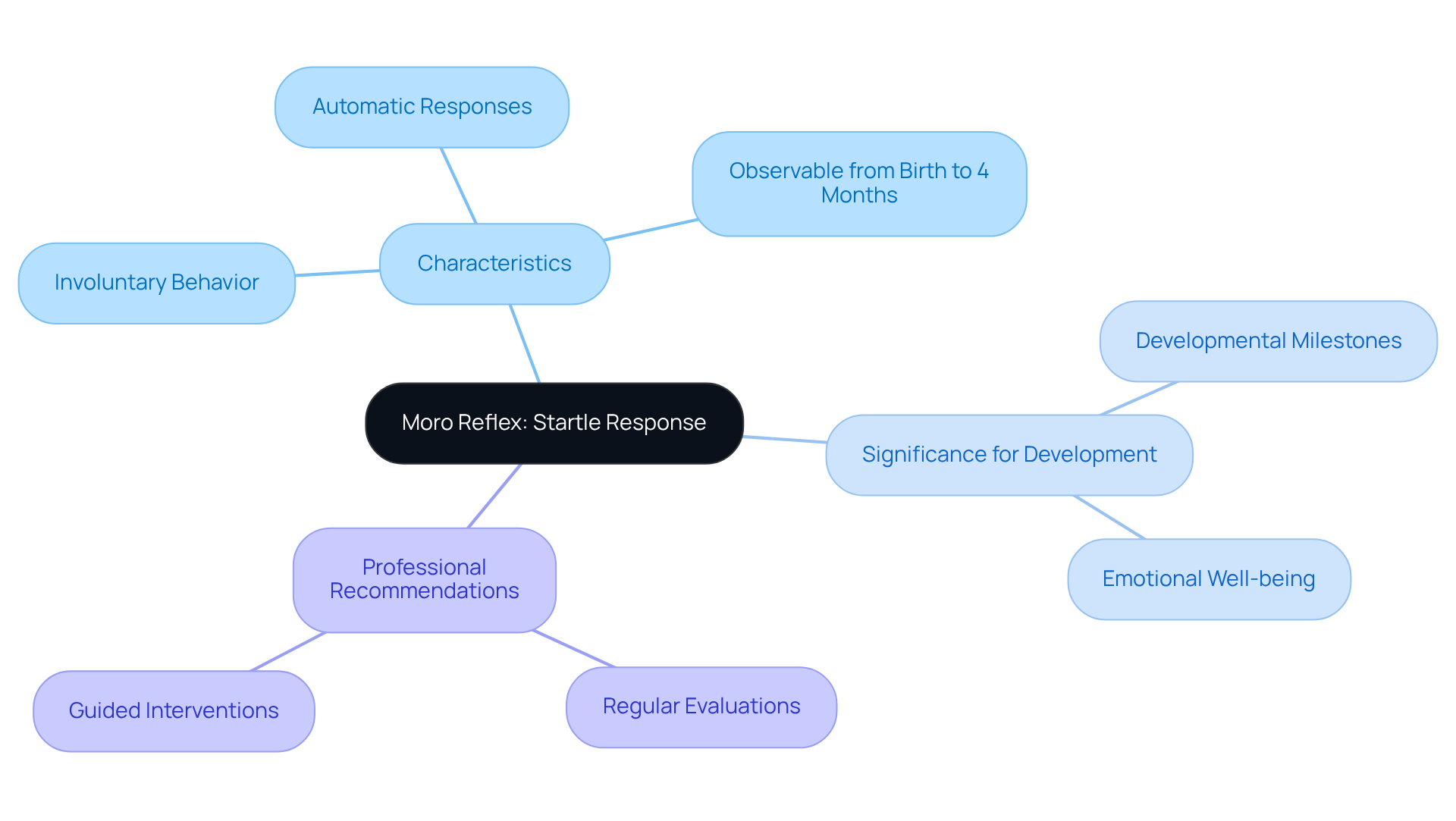
The stress reaction is a natural physiological occurrence activated when a person senses a threat, marked by the release of hormones that prepare the body for fight or flight. This unconditioned response example can significantly , often resulting in heightened anxiety and emotional dysregulation.
In therapeutic environments, Board Certified Behavior Analysts play a crucial role in assisting individuals in recognizing their distinct stress reactions. By developing effective coping mechanisms—such as mindfulness, deep breathing, and cognitive restructuring—clients can better manage anxiety and enhance their emotional regulation.
Psychologists emphasize that fostering resilience through these strategies not only mitigates the immediate effects of stress but also contributes to improved therapy outcomes. Successful coping mechanisms empower individuals to navigate stressors more effectively, ultimately promoting a healthier mental state and enhancing overall well-being.
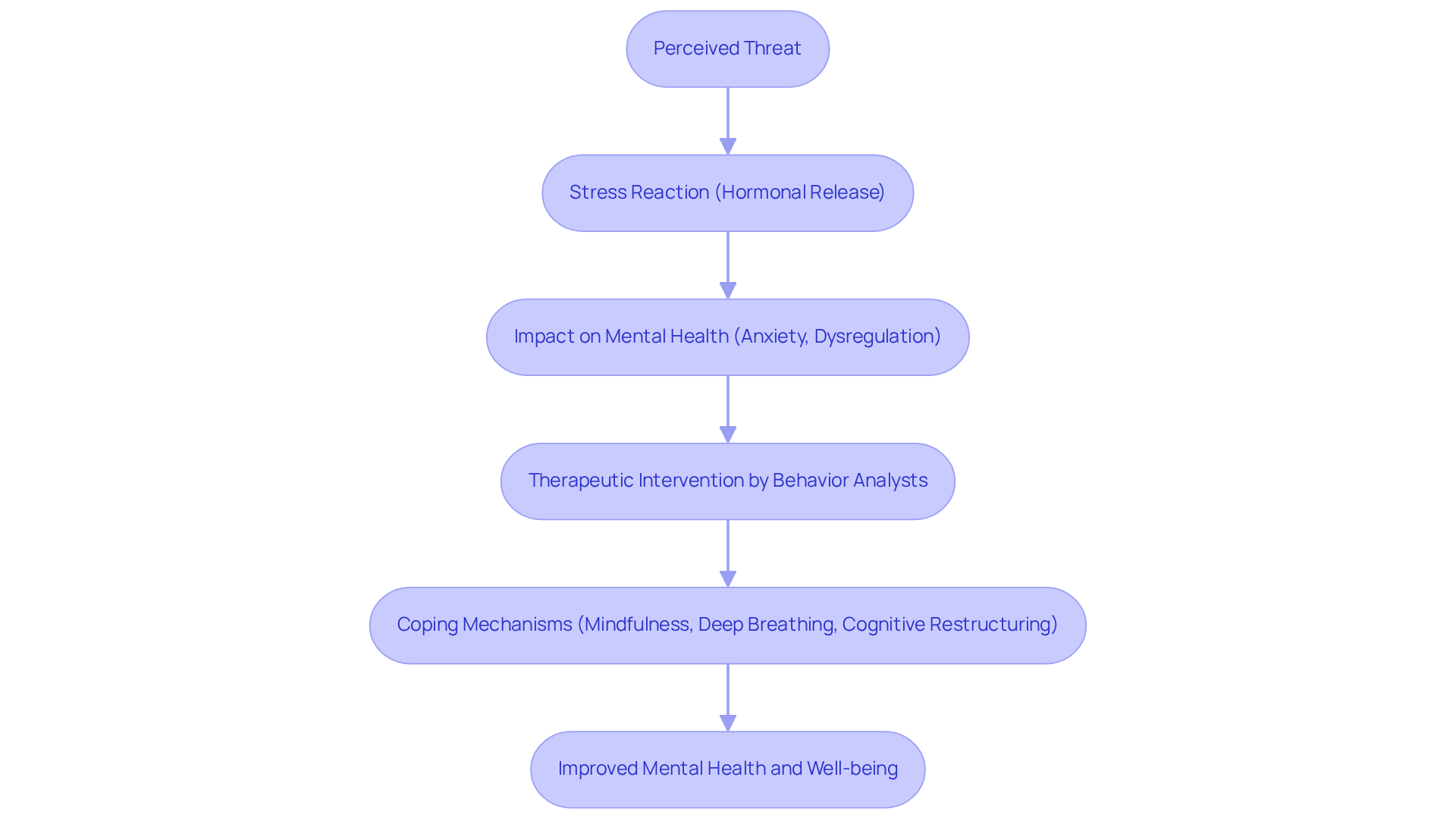
An unconditioned response example is eye watering, which is triggered by exposure to onion fumes that irritate the eyes. An unconditioned response example is this reflexive action that serves to protect the eyes from harmful substances. Understanding this response is crucial for (BCBAs) working with clients who have sensory sensitivities. By leveraging this knowledge, BCBAs can assist clients in developing effective strategies to cope with irritants in their environment. This approach not only enhances their comfort but also significantly improves their overall well-being.
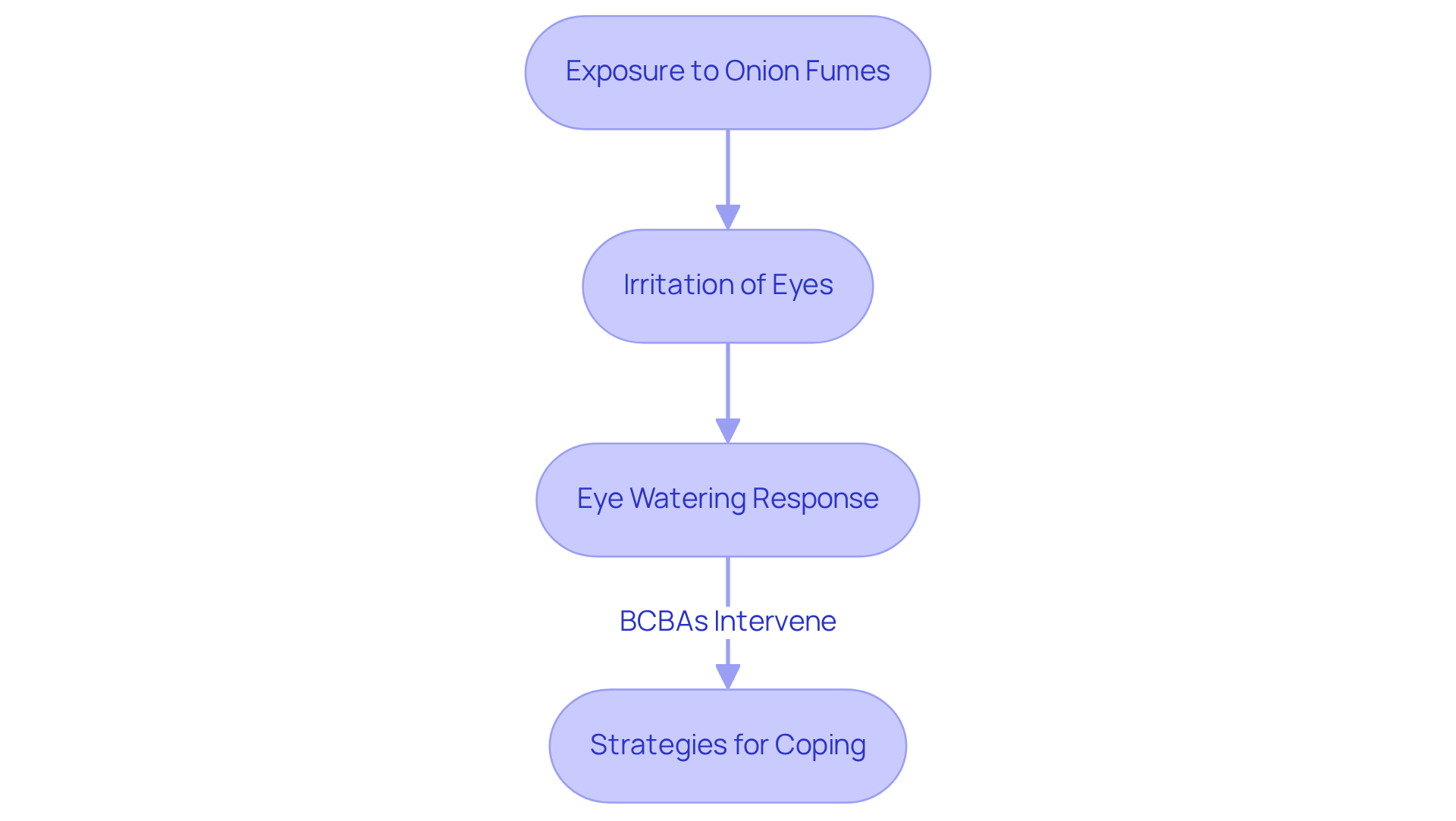
The active immune reaction represents the body's unconditioned response to infection, engaging a complex array of physiological processes designed to eliminate pathogens. This natural reaction is vital for sustaining health and well-being. Board Certified Behavior Analysts (BCBAs) play a crucial role in educating individuals about the significance of these immune responses. By developing targeted interventions, BCBAs can promote healthy behaviors, particularly among those with compromised immune systems, which are increasingly prevalent across various populations. Understanding these dynamics not only enhances therapeutic outcomes but also empowers individuals to make .
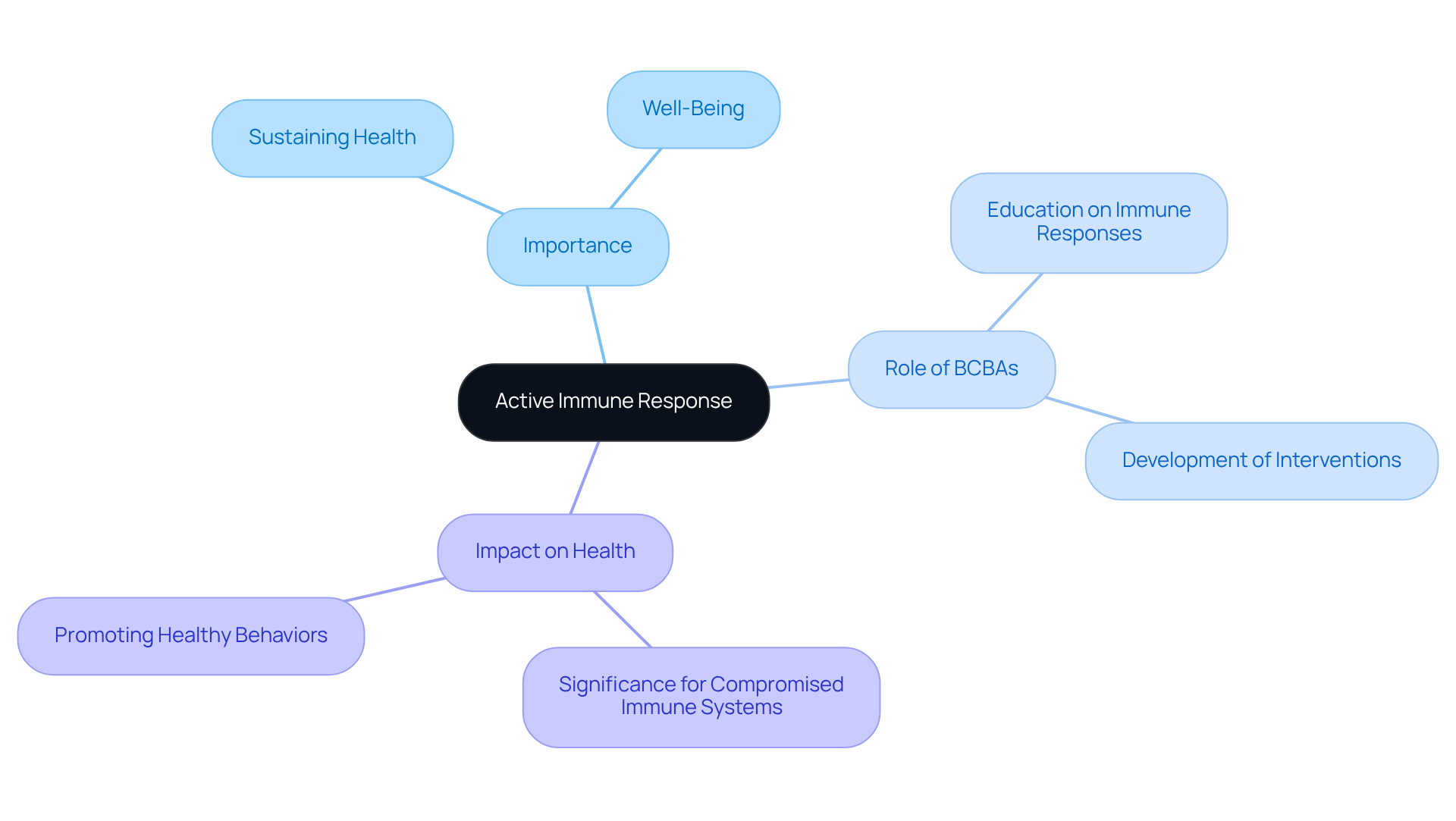
Sadness is a universal emotion that acts as an unconditioned response example to loss, arising instinctively in individuals. This emotional reaction can manifest in various ways, significantly impacting mental health.
With the expected to rise by 25% by 2026, their role in assisting individuals through grief is becoming ever more essential. Behavior analysts employ effective coping techniques to assist individuals in processing their emotions of sadness, promoting resilience and healing. By utilizing their knowledge in emotional responses, behavior analysts create a supportive environment that promotes recovery and emotional well-being.
As Chief Inspector Adam Robson noted, 'Success isn’t just about numbers—it’s about changing the culture and making support accessible to all.' This underscores the importance of BCBAs in facilitating emotional support and resilience in clients experiencing loss.
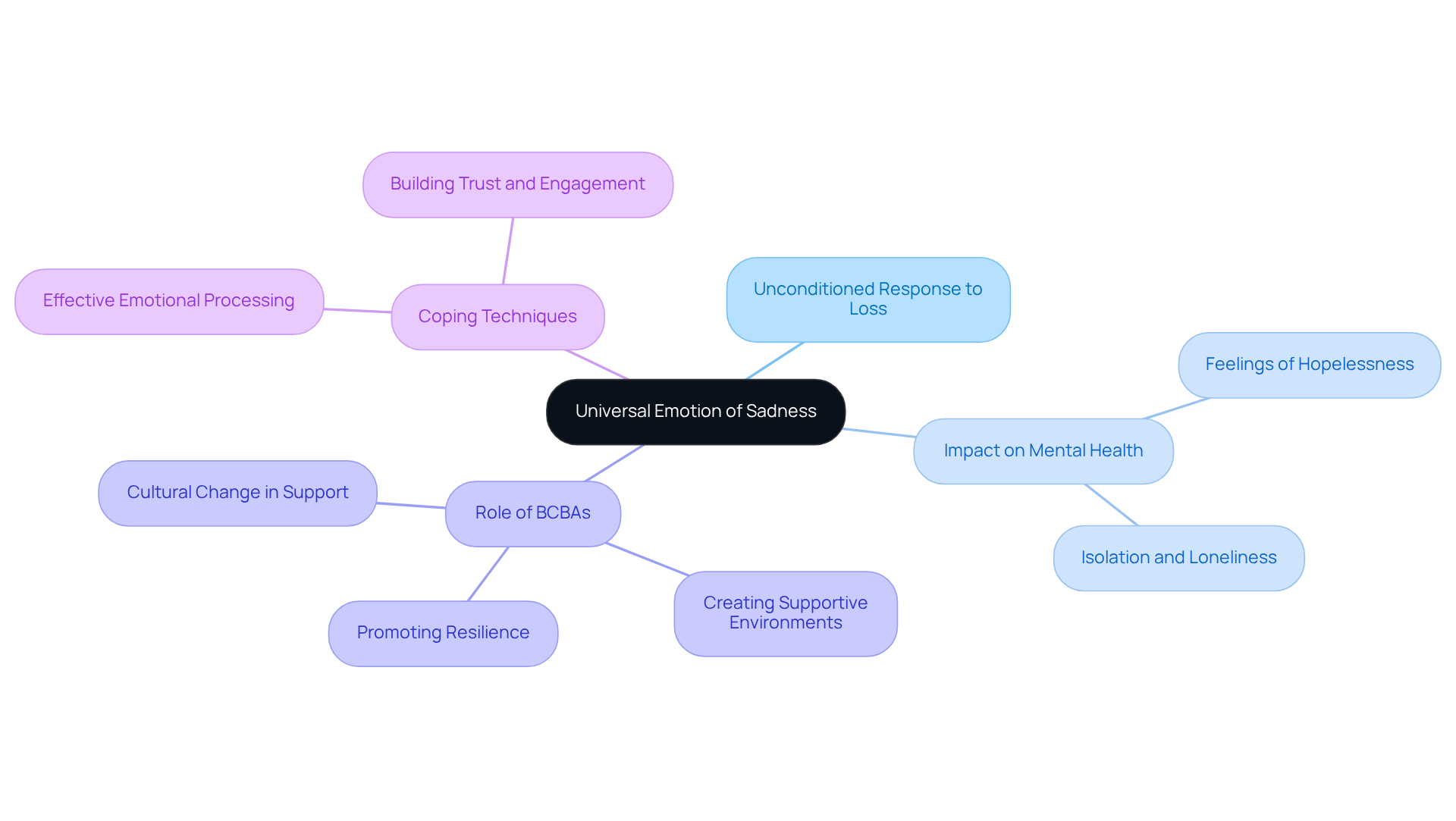
Understanding unconditioned responses is fundamental in behavioral psychology, as these instinctive reactions play a crucial role in shaping human behavior and emotional responses. Consider the increasing demand for Board Certified Behavior Analysts (BCBAs) in today’s clinical landscape. By exploring various examples, such as the flight response to threats, mouth watering in reaction to food aromas, and the physiological effects of stress, the significance of these automatic behaviors becomes clear. They not only illustrate the ways in which individuals instinctively react to their environment but also highlight the essential role of BCBAs in facilitating understanding and coping strategies for those facing challenges related to these responses.
The article has provided a comprehensive overview of nine distinct unconditioned responses, each with its unique implications for both individual well-being and therapeutic practices. From sneezing as a reflex to protect the respiratory system to the active immune response that combats infections, these examples demonstrate how the body instinctively reacts to maintain health and safety. Furthermore, the universal emotion of sadness as a response to loss emphasizes the psychological dimensions of these reactions, reinforcing the need for effective support from behavior analysts.
In light of these insights, it is crucial for practitioners and healthcare employers to recognize the importance of unconditioned responses in both clinical and everyday settings. Are you facing challenges in hiring qualified professionals? By fostering a deeper understanding of these instinctive behaviors, BCBAs can implement tailored interventions that enhance coping mechanisms and promote emotional resilience. Engaging with resources like Hire ABA can streamline the recruitment of qualified professionals who are equipped to make a significant impact in the field. Empowering individuals to navigate their instinctive responses not only improves therapeutic outcomes but also enriches the overall quality of care in behavioral health. The time to act is now—let Hire ABA help you find the right talent to meet your needs.
What is the purpose of Hire ABA?
Hire ABA specializes in connecting Board Certified Behavior Analysts (BCBAs) with job openings that allow them to utilize their expertise in behavioral psychology.
How does Hire ABA assist BCBAs in their job search?
Hire ABA conducts personalized resume assessments to evaluate a candidate's experience and career aspirations, ensuring optimal job matches through advanced job fit scoring that aligns opportunities with their skills, preferences, and desired locations.
What benefits does the streamlined hiring process provide to BCBAs?
The streamlined hiring process allows BCBAs to focus on their practice, which enhances the quality of care they provide to clients in ABA therapy settings.
How does Hire ABA benefit healthcare employers?
By connecting employers with the right BCBAs, Hire ABA improves recruitment strategies and helps secure top-tier talent, ultimately benefiting the quality of care provided to clients.
What is the flight response in behavioral psychology?
The flight response is an instinctive reaction that occurs when an individual perceives a threat, preparing the body to either escape from danger or confront it directly.
Why is understanding the flight response important in therapeutic settings?
Recognizing the flight response is vital for developing effective strategies to manage anxiety and stress, allowing behavior analysts to help individuals enhance their understanding and coping mechanisms.
What is mouth watering an example of?
Mouth watering is an unconditioned response triggered by the aroma of food, serving as a physiological reaction that prepares the digestive system for incoming nourishment.
How can BCBAs use the understanding of unconditioned responses like mouth watering in therapy?
Understanding such reactions enables BCBAs to create interventions that address eating behaviors and food-related anxieties in clients, particularly those dealing with eating disorders.
Our expert recruitment strategies and AI-driven sourcing ensure that you receive top-notch candidates quickly, without compromising on quality. Whether you’re looking for BCBAs, Clinical Directors, or RBTs, we’ve got you covered.